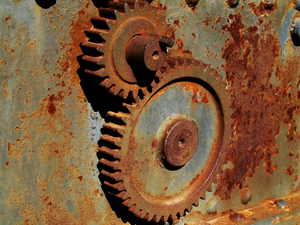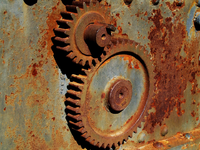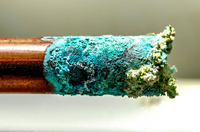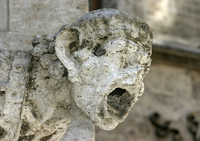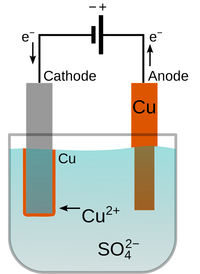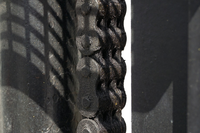Corrosion
Contents
Key Stage 3
Meaning
Corrosion is when a material is worn down by chemical reactions with substances in the environment.
About Corrosion
- Rusting is a form of corrosion.
- Acid rain causes the corrosion of limestone and marble buildings and statues.
Key Stage 4
Meaning
Corrosion is when a material is worn down by chemical reactions with substances in the environment.
About Corrosion
- Corrosion is commonly caused by Water, Oxygen and Acids in the environment.
- Metals and stone (such as limestone, marble and chalk) are the most commonly corroded materials.
- More reactive metals are more easily corroded.
Examples
| The corrosion of Iron forms brown Iron Oxide, known as rust. Rusting happens more quickly in humid air or in salty water. | The corrosion of Copper forms green Copper Carbonate. Initially the Copper is Oxidised to form Copper Oxide, a black solid, but then reacts with Carbonic Acid to form Copper Carbonate. | This statue is made of Limestone which is mostly Calcium Carbonate. It is corroded by Acid Rain to form soluble salts which wash away. |
Preventing and Reducing Corrosion
- Corrosion can be prevented by making a physical barrier between the object and the chemicals in the environment. This can be done by painting, covering something in grease or by electroplating.
| This Iron pipe was painted to prevent corrosion, but where the paint has chipped away, the Iron has rusted. | Electroplating can cover a reactive metal with a less reactive metal such as Copper create a physical barrier between the object and the environment. | Grease is used on bike chains to prevent corrosion. Paint and electroplating cannot be used because they would chip away from constant movement of the chain. |
- Corrosion of a metal object can also be prevented using a Sacrificial Anode which is a metal more reactive metal placed in electrical contact with the object. This prevents Oxidation of the object because the more reactive metal has a greater tendency to form positive ions causing it to oxidise instead of the object.
| A Sacrificial Anode made of Zinc has been attached to the Iron hull of a boat. |
References
AQA
- Corrosion, page 338-9, GCSE Chemistry; Student Book, Collins, AQA
- Corrosion, page 98, GCSE Chemistry; The Revision Guide, CGP, AQA
- Corrosion, pages 220-221, GCSE Chemistry; Third Edition, Oxford University Press, AQA
- Corrosion, pages 258-9, GCSE Chemistry, Hodder, AQA
- Corrosion, pages 287, 288, GCSE Chemistry, CGP, AQA
- Corrosion; prevention of, pages 259-60, GCSE Chemistry, Hodder, AQA
Edexcel
- Corrosion, page 235, GCSE Combined Science, Pearson Edexcel
- Corrosion, page 64, GCSE Chemistry; The Revision Guide, CGP, Edexcel
- Corrosion, pages 181-183, GCSE Chemistry, CGP, Edexcel
- Corrosion, pages 91, 98-99, GCSE Chemistry, Pearson, Edexcel
